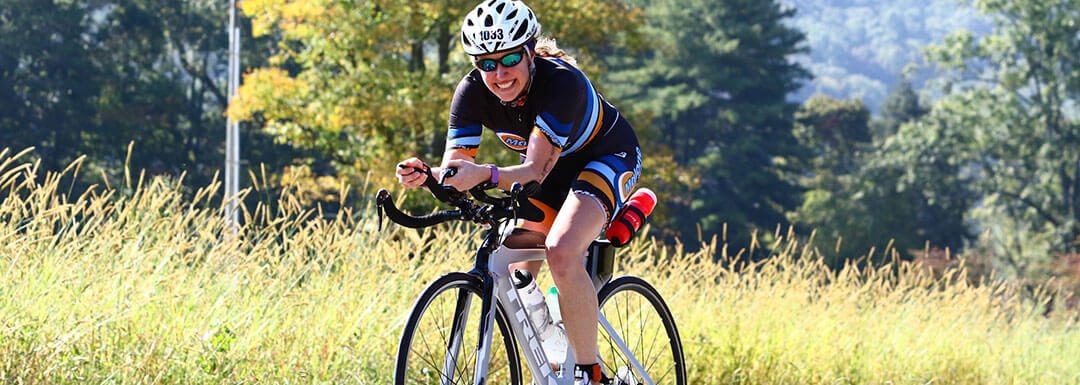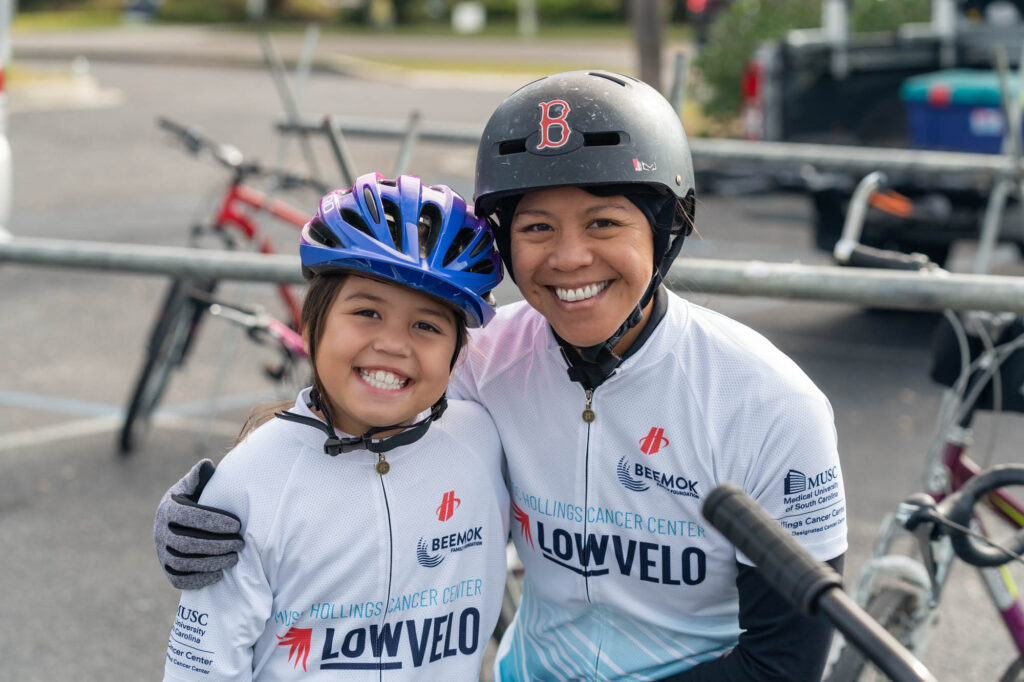Get In Gear: 10 Things You Need (And May Not Need) On Hand For LOWVELO

Catherine O’Sullivan knows that investing in a solid helmet is key in having a safe ride.
MUSC Wellness Center’s Catherine O’Sullivan gives advice on what you may need to bring and prep for LOWVELO.
Ensure your bike fits you
One of the most important pieces of equipment to have for longer distances is a bike that fits you correctly. You want to feel at ease on your bike and make sure that you are not uncomfortable or hurting while riding. You don’t want to end up injuring yourself because you’re incorrectly set up or out of alignment for the entire ride. There is nothing worse than an ill-fitting bike while out on the road for miles. Typically, something can be easily adjusted so you won’t create any unnecessary aches or pains while riding. Local bike fit specialists found at bikes shops can help you with your most ideal setup.Prepare for tire troubles
Flat tires happen, but these tools can prepare you for the worst: a saddle bag with tire levers, patch kits, two spare inner tubes and a cycling multi-tool. SAG, or support and gear wagons, can help with a maintenance problem, and specialists from our bike shop sponsors will be on-hand, too — but having the necessary materials with you will help them help you.Protect your head
Invest in a solid helmet and wear it! We are talking about life or death when you don’t protect your head. Plus, it’s a LOWVELO requirement.No headphones, please
Leave the headphones at home. You will need to be aware of your surroundings, such as cars behind you and other riders calling out bumps in the road. You are much safer on the road when you can hear well, and LOWVELO doesn’t allow them while riding.You probably don’t need new shoes
Cycling shoes are worth it but not a requirement. Riding in your sneakers is absolutely fine. If you do decide to purchase cycling shoes, any local bike shop will be able to help you choose the ones you need for your bike.Clip in now
Make sure to practice clipping in to the pedals before the ride. Practice makes clipping in and out of the pedals so much easier. By the way, you are going to fall at some point while trying to clip in or out. It’s just what happens, but it’s no big deal. Everyone does it!Trust me: Get biking shorts
Biking shorts with padding (chamois) is a game-changer! Biking shorts reduce the friction of the saddle that can cause chaffing (serious ouchies) while riding longer distances. They reduce moisture and are made to fit like compression shorts to support your muscles and promote blood flow.Gloves are a go
Wearing cycling half-finger gloves with padding can be helpful when riding. By doing so, you will relieve some of the pressure that is placed on your forearm and the medial nerves in your hands that can lead to discomfort from the vibration of the roads.Pack the eye protection
Protect your eyes and wear sunglasses. You’ll protect your eyes from not only the sun but also road debris that can fly up.Get in gear
Give your bike a little love! Get a thorough tune-up to make sure your gears are working properly. There are several bike shops in the Charleston area that will do a basic tune-up for a reasonable price. FYI, our bike shop sponsors are Trek Bicycle Shop, Cooper River Cycles and Ride Bikes.
Bonus tip: Most of all, have fun with your training as well as the ride! Remember why you are riding — for an incredible cause!
Don’t forget to read the Rider Playbook for a complete list of what to bring to LOWVELO, including a hand pump, two CO2 cartridges and nozzle, water, lip balm, sunscreen, a cell phone in a ziplock bag, ID, money and insurance card, prescription meds, keys, casual clothes for after the ride, rain gear, a sweatshirt and plastic bags to protect dry clothing in case of rain (and to pack wet items).


